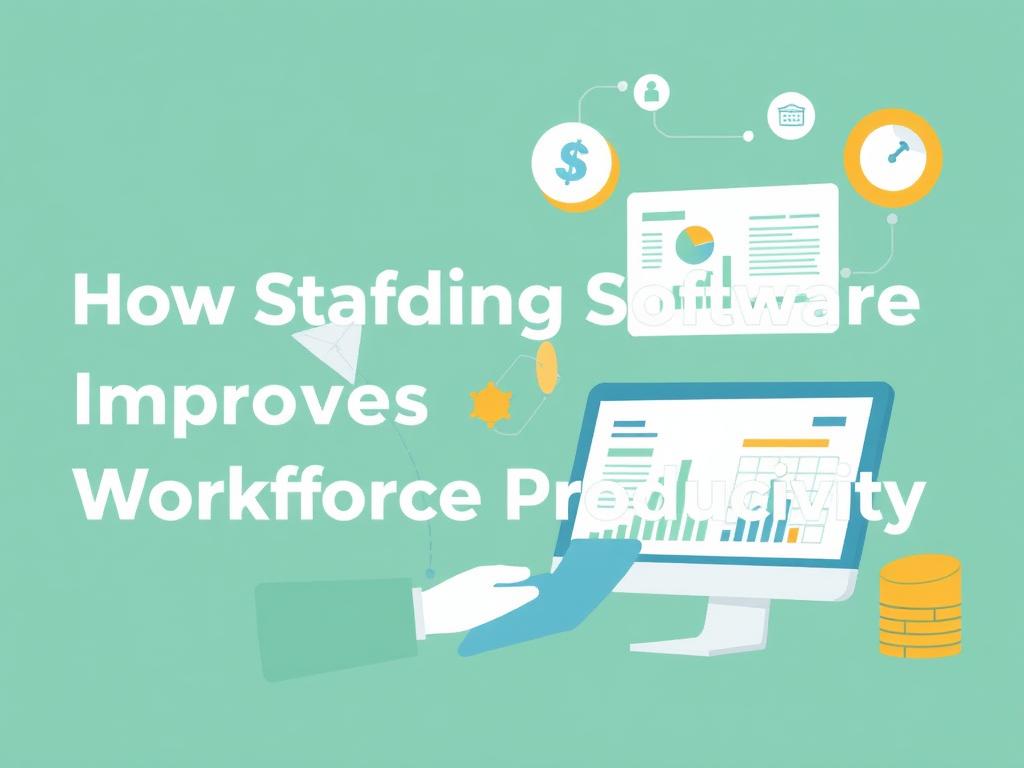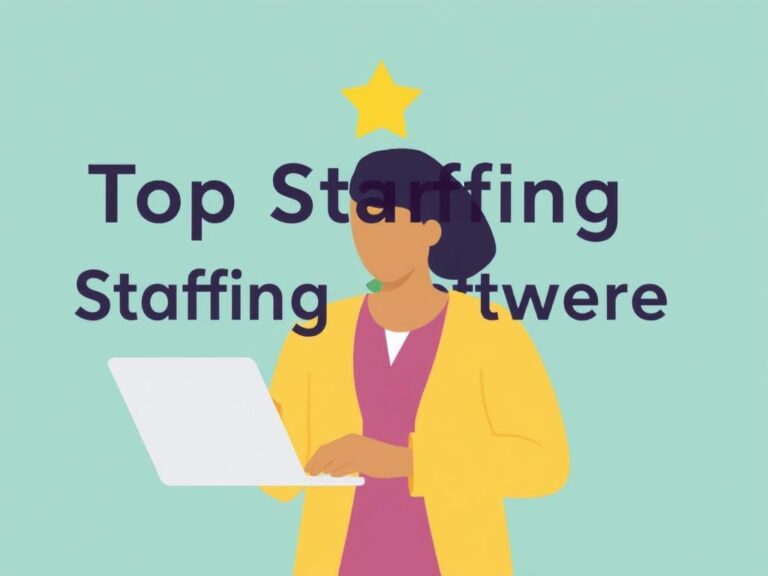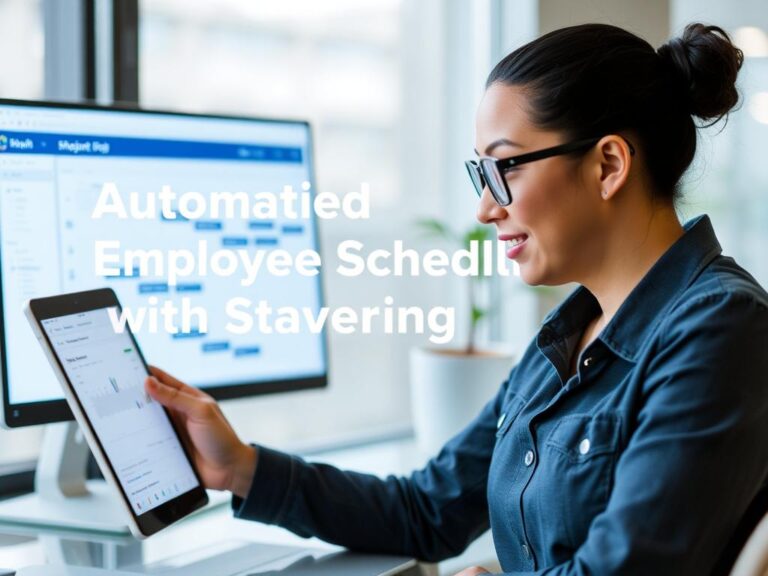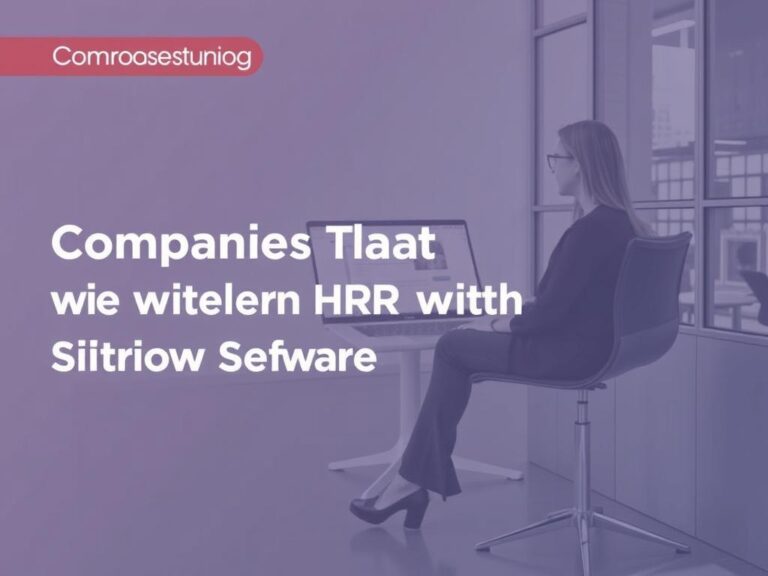How Staffing Software Improves Workforce Productivity: Unlocking Efficiency in Modern Workplaces
In today’s fast-paced business world, managing a workforce effectively is not just about hiring the right people—it’s also about optimizing how they work together and ensuring maximum productivity. This is where staffing software comes into play. Designed to streamline scheduling, track performance, and simplify communication, staffing software has become a vital tool for employers aiming to boost workforce productivity. But how exactly does it achieve these benefits? Let’s delve deeper into the impact of staffing software and why it’s transforming work environments across industries.
What Is Staffing Software?
Staffing software is a digital tool that helps companies manage their hiring process, employee schedules, workload distribution, and other workforce management tasks. Unlike traditional human resource methods that rely heavily on manual paperwork or isolated systems, staffing software integrates various functions into one platform. This integration reduces errors, saves time, and facilitates real-time updates, helping managers make informed decisions quickly.
Key Features of Staffing Software
To understand how staffing software improves workforce productivity, it’s important to look at typical features included in the best solutions:
- Automated scheduling and shift management
- Employee time tracking and attendance monitoring
- Skill matching and talent management
- Communication and collaboration tools
- Reporting and analytics dashboards
These features collectively create a smoother workflow, optimize staff allocation, and help avoid common issues like overstaffing or understaffing that can hinder productivity.
How Staffing Software Boosts Workforce Productivity

Staffing software improves workforce productivity through several interconnected benefits. Let’s break down how this happens:
1. Simplified and Efficient Scheduling
One of the biggest challenges managers face is creating schedules that match business demand while respecting employee availability. Staffing software offers automated scheduling capabilities that minimize conflicts and reduce the time spent on manual scheduling.
By using algorithms and employee preferences, the software ensures shifts are covered optimally and fairly. This not only reduces no-shows and last-minute changes but also increases employee satisfaction—key factors that directly raise productivity.
2. Real-Time Workforce Management
Traditional staffing methods often lack real-time visibility into who is working, who’s available, and how well tasks are being completed. Staffing software provides managers with instant insights into workforce performance and attendance.
This transparency helps quickly identify bottlenecks or potential issues before they escalate, allowing for timely intervention and adjustments that keep productivity on track.
3. Enhanced Employee Engagement and Communication

A productive workforce is often an engaged workforce. Staffing software includes built-in communication tools such as messaging, alerts, and notifications to keep everyone informed. Employees can easily swap shifts, request time off, or receive important updates, fostering a more connected workplace.
Better communication reduces misunderstandings and absenteeism, leading to smoother operations and improved overall output.
4. Better Utilization of Employee Skills
Not all employees have the same skills or strengths. Staffing software helps managers match tasks and shifts to the right employees by tracking qualifications and experience. This skill-based assignment ensures tasks are completed efficiently and with high quality, enhancing productivity.
The Role of Analytics and Reporting in Staffing Software
Another advantage of staffing software is its ability to collect and analyze workforce data. With detailed reports on attendance, productivity, and scheduling efficiency, managers gain valuable insights into workforce trends and areas for improvement.
| Type of Report | Benefit | Impact on Productivity |
|---|---|---|
| Attendance Reports | Track employee punctuality and absences | Reduce unplanned absenteeism and improve shift coverage |
| Shift Efficiency | Analyze how well shifts are staffed and executed | Optimize staffing levels to meet demand without overstaffing |
| Employee Performance Metrics | Monitor individual and team productivity | Identify top performers and areas where training is needed |
Using these insights, companies can adjust staffing strategies proactively, increasing business agility and workforce effectiveness.
Common Challenges Resolved by Staffing Software

Many organizations face similar hurdles when trying to maintain a productive workforce. Staffing software addresses the following common pain points:
- Scheduling Conflicts: Automatically resolves overlapping shifts and availability issues.
- Communication Breakdowns: Streamlines messages and quick updates through integrated platforms.
- Manual Errors: Eliminates mistakes related to manual data entry and paper-based processes.
- Time-Consuming Admin Tasks: Frees up managers from repetitive tasks to focus on strategic decisions.
- Inconsistent Performance Tracking: Provides standardized tools to measure and compare productivity levels.
By tackling these challenges, staffing software paves the way for a more organized and efficient workforce.
Choosing the Right Staffing Software for Your Business
Not every staffing software solution is the same, and selecting the right tool depends on your company’s specific needs. Factors to consider include:
- Scalability: Can the software grow with your team and business demands?
- User-Friendliness: Is the interface intuitive for both managers and employees?
- Integration: Does it work well with your existing HR or payroll systems?
- Customization: Are you able to tailor features such as scheduling rules or reporting?
- Support and Training: What level of assistance does the software provider offer?
A well-chosen staffing software helps not only improve workforce productivity but also enhances overall employee experience and retention.
Future Trends in Staffing Software
The staffing software landscape is continually evolving. Emerging technologies like artificial intelligence (AI) and machine learning are starting to play a bigger role in predictive scheduling and demand forecasting. These innovations promise even more precise workforce optimization, enabling companies to anticipate busy periods and adjust staffing plans accordingly.
Additionally, mobile accessibility is becoming vital as remote and hybrid work models increase. Staffing software that supports easy access from smartphones and tablets empowers employees to manage their schedules on the go, further boosting responsiveness and productivity.
Benefits of Emerging Capabilities
- AI-powered demand forecasting leads to better alignment of workforce and workload.
- Mobile apps enhance real-time communication and schedule flexibility.
- Automation reduces manual intervention, cutting down errors and delays.
These advancements are setting the stage for a new era in workforce management where agility and responsiveness are key drivers of productivity.
Summary Table: Impact of Staffing Software on Workforce Productivity
| Staffing Software Function | Specific Benefit | Resulting Productivity Gain |
|---|---|---|
| Automated Scheduling | Reduces conflicts and ensures optimal coverage | Minimizes downtime and absenteeism |
| Real-Time Monitoring | Instant visibility into workforce status | Faster issue resolution and resource allocation |
| Employee Skill Matching | Assigns the right person to the right task | Improved task completion efficiency |
| Communication Tools | Streamlines shift swaps and team collaboration | Reduces miscommunication and scheduling delays |
| Analytics and Reporting | Informs data-driven staffing decisions | Enhanced operational planning and workforce optimization |
Conclusion
Staffing software is much more than just a scheduling tool—it represents a comprehensive solution that empowers businesses to manage their workforce more intelligently and productively. By automating mundane tasks, improving communication, offering deeper insights through analytics, and leveraging employee skills effectively, staffing software transforms the way teams function day to day. Whether you’re a small business trying to keep up with fluctuating demands or a large organization juggling thousands of employees, integrating staffing software can deliver substantial productivity gains. As the workforce landscape continues to evolve, investing in the right staffing software will be crucial for companies aiming to stay competitive, agile, and efficient. Ultimately, embracing these technologies not only streamlines operations but also helps cultivate a more engaged and productive workforce, which is the key to sustained business success.






